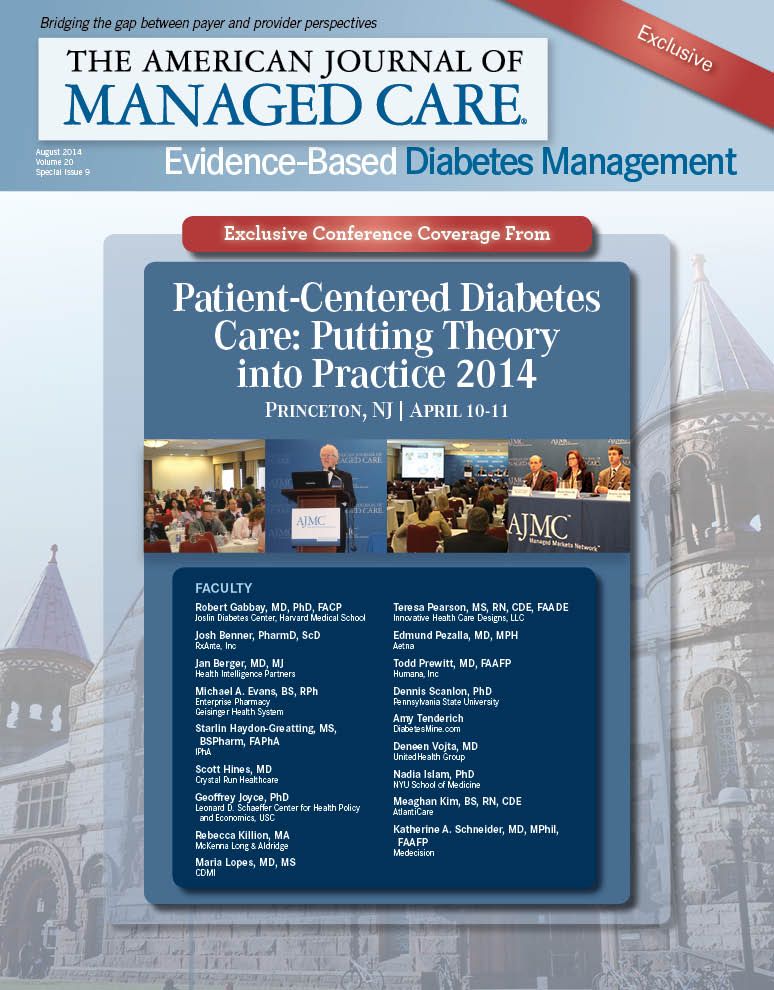Publication
Article
Evidence-Based Diabetes Management
Workers' Ties to Populations They Serve Help Bridge Gaps to Overcome Health Disparities
Dr Islam talked about how socioeconomic models are built to care for diabetic patients with diverse backgrounds.
Whether they are called patient navigators, outreach workers, or some other name, community health workers (CHWs) who live among the people they serve are key to
overcoming health disparities among minority or immigrant groups, according to a public health expert who has seen the results.
Nadia S. Islam, PhD, assistant professor for population health at NYU Langone Medical Center, described the CHW model in her talk, “Overcoming Socioeconomic Disparities in Diabetes Care,” as one that can be replicated and fine-tuned to meet the needs of specific groups. Islam has studied programs that serve several Asian American subgroups in New York City. The common thread of successful programs is recruiting health workers who are respected community
members, and who understand the cultural barriers to good healthcare.
CHWs, Islam said, “serve as a bridge between communities and systems—not just healthcare systems but other systems that influence the receipt of healthcare and living healthy lives.”
Models that include key figures like CHWs will become more important as immigrant populations increase, she said. For instance, one hurdle Islam noted was that non—Asian Americans often believe Asian Americans are a “model minority.” In fact, these communities can be bifurcated, with some residents doing very well professionally and socially and others living in desperatepoverty. As such, the community’s healthcare is obviously impacted.
“The diabetes epidemic is very squarely focused on Asia. It’s well known that India and China have the highest rates of diabetes,” Islam said. “So it’s surprising that the diabetes disparities among Asian Americans are not as widely discussed or documented.”
Part of the problem is data, she noted. Asians are often categorized in 1 group during data collection, although health characteristics can vary widely, depending on one’s nation of origin as well as socioeconomic factors.
Islam described 3 programs in place in New York City:
• Project Aspire, a hypertension management program for the Filipino community
• The DREAM (Diabetes Research Education Action among Minorities) Project, a diabetes management program for the Bangladeshi community
• Project Rice, a diabetes prevention program for residents originally from South Asia and Korea
Research conducted on these programs involves “numerous stakeholders,” Islam said, including religious groups, community organizations, social service agencies, and academic partners. By using rigorous curricula from groups like the National Health Lung and Blood Institute in combination with culturally appropriate research methods, the projects have been able to develop health interventions that overcome obstacles such as limited English proficiency.
The programs communicate with their target audiences through ethnic media, and once CHWs become embedded in the communities they serve, referrals from past participants have a “snowball” effect.
Researchers sometimes glean surprising information, Islam said. For example, there’s a belief that when immigrant groups come to the United States, they gain weight and develop diabetes in part because they adopt American diets. That’s not entirely true, it turns out.
“What we’ve found is that people very strongly hold onto their home country diets,” Islam said. What happens, though, is that portion levels of certain foods—such as high-fat meats–that were once used sparingly are suddenly available in abundance.
Or take the case of Bangladeshi men, who typically work in low-wage professions such as cab driving. “We found in this population that there were really low rates of physical activity,” she said. Many participants never thought about getting exercise before they started the program, and once they start, participants report higher rates of physical activity.
More profound are examples of CHWs addressing cultural restrictions that prevent some of the immigrant women from traveling without an escort. Just getting women to learn to take the subway to see a doctor can be a major undertaking. Yet one 52-year-old Bangladeshi woman who overcame these hurdles now volunteers for the DREAM program, Islam said.
EBDM
Future studies, she said, will integrate CHWs into initiatives with providers and payers, perhaps with incentives.






